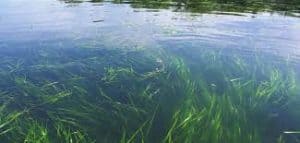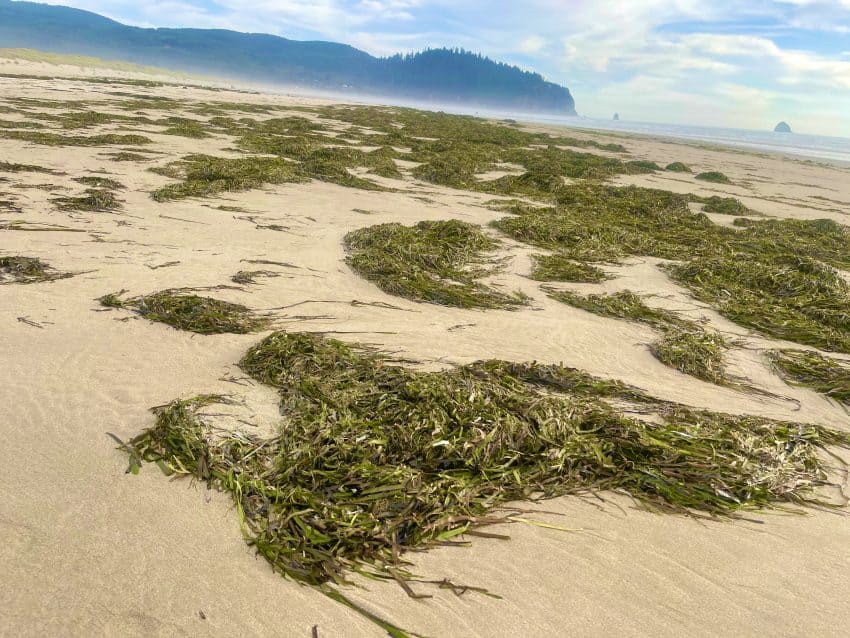By Scott Gordon for Friends of Tillamook Bay
As thousands of us get excited and gear up for the height of the fall salmon season, we should take a moment to question: Are we catching the numbers of fish that we used to? Why has ODFW limited us to only two wild Chinook salmon this season? Tillamook Bay, Oregon, is a unique and dynamic ecosystem where five rivers converge, creating an essential habitat for anadromous fish like salmon and steelhead. These rivers — the Wilson, Trask, Tillamook, Kilchis, and Miami — support annual runs of salmon and steelhead, including the threatened Coho salmon, which is listed under the Endangered Species Act (ESA). For decades, conservation efforts have focused on restoring upstream spawning areas in an attempt to bolster dwindling populations. However, the vital journey these fish take is not just limited to their time in rivers and streams; the health of the bay itself is equally critical for their survival.
In recent years, the expansion of mechanized oyster farming in Tillamook Bay has raised serious concerns regarding the health of this delicate ecosystem, particularly in relation to eelgrass beds, which serve as critical nursery habitats for juvenile fish, or “smolts,” as they transition from freshwater to the open ocean. The mechanical harrowing and dredging associated with oyster farming is damaging these eelgrass beds, threatening not only the bay’s ecological balance but also the survival of salmon and steelhead populations. Protecting these eelgrass meadows must be a priority if we are to ensure the long-term sustainability of both the bay’s aquatic life and its economic benefits.
 Eelgrass: The Unsung Hero of Coastal Ecosystems
Eelgrass: The Unsung Hero of Coastal Ecosystems
Eelgrass (Zostera marina) is a submerged aquatic plant that plays a pivotal role in coastal ecosystems like Tillamook Bay. These underwater meadows provide a wide array of benefits including the stabilization of sediment and improving water quality, but one of the most important roles of eelgrass is its function as a protective habitat for juvenile fish, including salmon smolts. As young salmon and steelhead make their way from freshwater streams to the ocean, they pass through estuarine environments like Tillamook Bay, where they face numerous challenges, including predation. Eelgrass meadows offer these smolts crucial shelter from predators, as the dense vegetation helps them avoid being spotted by larger fish and birds. Additionally, eelgrass beds are rich in nutrients and food sources that smolts rely on as they adapt to the salinity of ocean water. Without the protection and nourishment provided by eelgrass, their chances of survival would diminish significantly.
The Threat of Mechanical Harrowing and Dredging
The recent increase in mechanized oyster farming in Tillamook Bay has introduced a new threat to the health of these eelgrass meadows. Mechanical harrowing for the purpose of preparing the bay bottom, rakes through the sediment, uprooting eelgrass, while dredging for the purpose of harvesting mature oysters disrupts the seabed, making it difficult for eelgrass to reestablish itself. Both practices cause long-lasting damage that can take years, if not decades, to reverse. While this might boost oyster production and profits in the short term, these methods are destructive to eelgrass beds. Loss of eelgrass beds due to these practices not only impacts the salmon smolts but affects the entire food chain, from invertebrates to birds and larger fish. Moreover, the damage to eelgrass beds undermines efforts to restore and protect the salmon populations that have been the focus of conservation projects for years. The recovery of upstream spawning areas will be in vain if the downstream estuarine habitats are not equally protected.
Economic and Ecological Balance: A False Choice
Supporters of mechanized oyster farming might argue that these practices are necessary for the local economy. However, this is a short-sighted perspective. The health of Tillamook Bay’s ecosystems is directly linked to the economic prosperity of the region. Commercial and recreational fishing, crabbing, and tourism rely heavily on a healthy, biodiverse bay. Salmon, in particular, are a cornerstone of the local economy, attracting sport fishers and sustaining commercial fisheries. If we continue to degrade the habitats essential for the survival of salmon and steelhead, the economic impacts will be felt far beyond the oyster industry. It is not a question of choosing between the economy and the environment; rather, it is a matter of finding sustainable practices that allow for both to thrive. Oyster farms are an important component of our local economy. In addition to the excellent protein we humans get to consume, oysters filter and clean the water, stabilize bottom structure, and provide essential fish habitat. All but one oyster farm operation in both Netarts and Tillamook Bays use sustainable oyster farming methods that do not require the destruction of vital habitats like eelgrass meadows. Eliminating mechanized oyster farming would allow the industry to continue while minimizing harm to the ecosystem.
A Call to Protect Tillamook Bay
The restoration of salmon and steelhead populations is a long and complex process that requires the protection of the entire ecosystem — from the rivers where they spawn to the estuaries where they prepare for their oceanic journey. The continued mechanical harrowing and dredging for oyster farming in Tillamook Bay threaten the very foundations of this ecosystem. Tillamook Bay’s rivers, salmon, and eelgrass are deeply interconnected. Protecting them is not just an environmental responsibility; it is essential for the health, prosperity, and sustainability of the entire region. We must recognize the critical role that eelgrass plays in supporting the survival of juvenile salmon and steelhead and take immediate action to halt destructive oyster farming practices in the bay. Contact your local legislators, Representative Cyrus Javadi (rep.cyrusjavadi@oregonlegislature.gov) and Senator Suzanne Weber (sen.SuzanneWeber@oregonlegislature.gov), and urge them to support a ban on mechanized oyster farming.
Friends Of Tillamook Bay is a grass roots group of concerned citizens who have witnessed first hand the devastating effects of mechanized aquaculture in Tillamook bay and, being frustrated with the inaction of both governmental and private organizations to do anything about it, is taking the on the task of raising public awareness in the hopes of affecting policy change. friendsoftillamookbay@gmail.com


